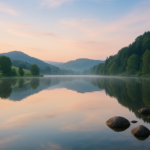Scientists have known about bird flu (H5N1) for decades as a virus that primarily affects birds. Until suddenly, one day, it didn’t. In March 2024, H5N1 showed up somewhere very unexpected—in dairy cows in Texas (and their milk). And then, the virus started jumping to other mammals—goats, domestic cats, and even dolphins—and to humans who interacted with these animals. While there was no evidence of human-to-human transmission, the speed and trajectory of this cross-species transmission was deeply concerning.
As 2024 progressed, the situation worsened. The virus spread rapidly across continents via migratory birds, infecting mammals worldwide. In the U.S., poultry outbreaks led to widespread illness and death among flocks, along with skyrocketing egg prices. By early 2025, H5N1 had led to nearly 70 confirmed human infections and one death.
And then, on April 28, 2025, a global group of virologists published a call in the Lancet to scale up health security activities related to the bird flu, noting that “sporadic human infections with no known contact with infected animals highlight the possibility of viral adaptation for efficient human-to-human transmission.” Given the alarming speed of cross-species transmission in the span of a year, the article highlighted an urgent need to increase testing and surveillance in animals and humans, more personal protective equipment for farmers and other key occupations, expedited vaccine development, and campaigns to combat vaccine hesitancy.
Unfortunately, 2025 has also seen a significant dismantling of the Centers for Disease Control and Prevention (CDC), the Food and Drug Administration (FDA), and other agencies that contribute to the testing and monitoring of milk, wastewater, and other public health surveillance systems. 2025 has also witnessed a rise in vaccine-related misinformation and vaccine hesitancy. In a recent U.S. poll, nearly half of respondents were unable to determine whether claims regarding measles vaccines were true or false. Which may be why we are seeing one of the largest outbreaks of measles, a vaccine-preventable disease, in decades. (Ironically, we’d declared measles to be eliminated from the U.S. in 2000.)
In short: We’re facing the perfect storm for the next pandemic. We may get lucky, and sustained human-to-human transmission of H5N1 might never occur—but if it does, we may not detect it in time. Without robust monitoring systems, we could miss the early warning signs until it’s too late. And even if we do detect it, our population may not accept the vaccines or other preventive measures necessary to stop viral spread.
So, what does this mean? It’s time to revisit and update pandemic preparedness plans. But this time, we may have fewer surveillance tools and less data. For health care professionals, this could mean flying blind through the next crisis. And to make matters worse, trust in U.S. physicians and hospitals has plummeted—from 71.5 percent in April 2020 to just 40.1 percent by January 2024—making efforts to promote vaccination and other prevention measures even more difficult.
In these unprecedented times, it is more important than ever that we educate our health care community on the basics of public health monitoring and effective health communications to low-trust populations. Without the infrastructure of the public health agencies, our students, residents, and practitioners will need to know where to get data, how to interpret it, and how to explain it to patients. Widespread, easily accessible coursework and continuing education credits on these topics will be key. In addition, we need far-reaching, proactive social media campaigns to combat the rampant disinformation our patients are bombarded with. Federal agencies won’t have the funding or staffing resources to meet either of these needs. And state agencies are reeling from federal funding cuts as well. It will be up to individual universities, hospitals, and health care professionals to step up.
The next pandemic may already be unfolding. This is our call to action.
Tista S. Ghosh is an internal medicine physician and epidemiologist.



















![A leader's journey through profound grief and loss [PODCAST]](https://kevinmd.com/wp-content/uploads/The-Podcast-by-KevinMD-WideScreen-3000-px-4-190x100.jpg)



![How genetic testing redefines motherhood [PODCAST]](https://kevinmd.com/wp-content/uploads/Design-3-190x100.jpg)
